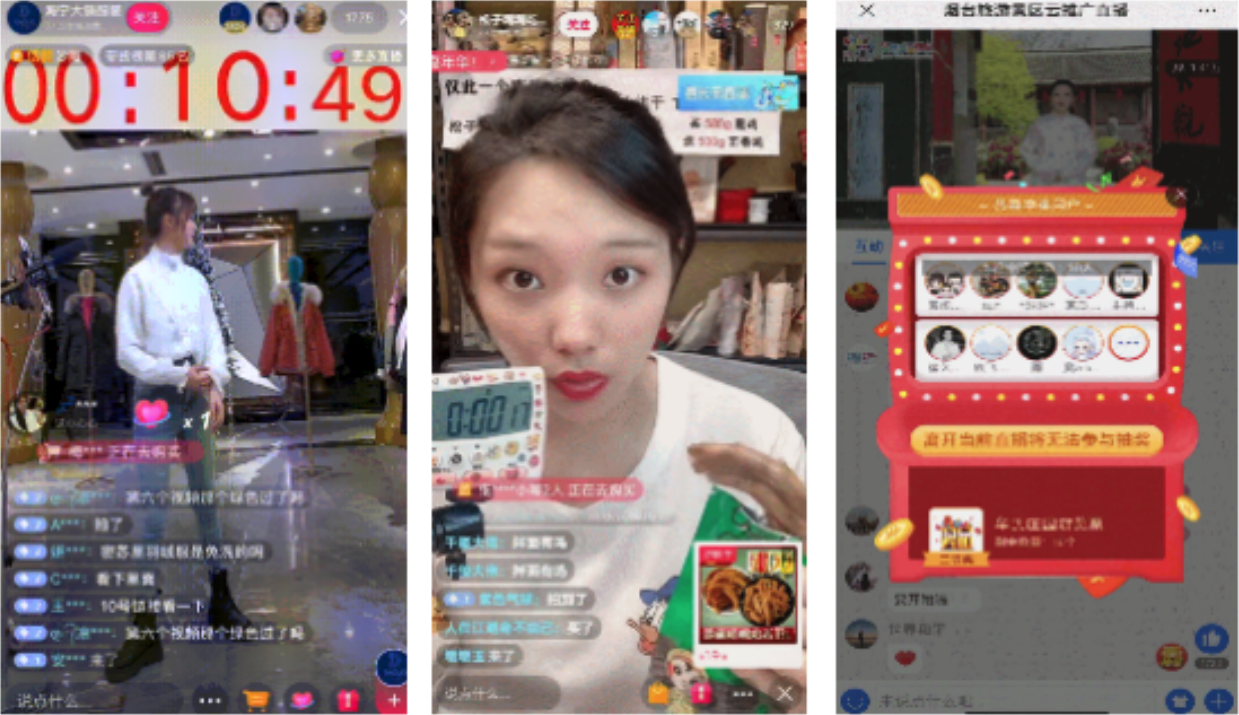
Nitheesh NH
On August 25, 2021, Deborah Weinswig, CEO and Founder of Coresight Research, presented a livestreaming e-commerce playbook for US brands and retailers at retailX in Chicago. We present insights from the presentation, covering the retail opportunity in shoppable livestreaming, learnings for the US from China, and livestreaming best practices.
 Flash sales and lottery draws in the China market
Flash sales and lottery draws in the China market
Source: Bilibili[/caption] According to Weinswig, one of the biggest differences between Chinese and US livestreaming is that American brands and retailers tend to “unleash all [their] inventory,” while products on Chinese livestreams are often available only in limited quantities or for a limited time, such as during shopping festivals. In terms of focusing viewers’ attention, Weinswig said that Chinese livestreams typically dedicate three to six minutes to each product presented in a livestream, rather than promoting lots of products together. In addition, products are often promoted with limited-time special prices, packaging or customization to increase consumers’ anticipation and create a sense of urgency. Weinswig explained that this adds to the Chinese concept of shopping as akin to a sport, with individuals fighting to get to the front of the line. Limited offers are a strategy that is employed by brands and retailers during shopping festivals in particular. In future, Coresight Research expects more shopping festivals to gain traction in the US, including popular events from China, such as Singles’ Day. Constructing a Livestreaming Strategy Weinswig offered recommendations for brands and retailers hoping to join the US livestreaming space, which we present below. Use existing store associates as livestream hosts Even though influencers and key opinion leaders (KOLs) are highly popular in China, Weinswig explained that store associates are product experts and are more likely to be passionate about the brand—making them knowledgeable, personable and enthusiastic livestream hosts. Using these hosts is also more cost-effective than working with influencers, according to Weinswig, and some retailers even pay associates in gift cards or days off. Hosting livestreams in-store can also be beneficial in creating dynamic and engaging sessions that promote a brand’s or retailer’s wider assortment: Hosts can pick up products that were not necessarily planned to feature in the session when responding to real-time questions from viewers. Build an audience Weinswig suggests that brands and retailers partner with livestreaming platforms—either broadcasting on social channels or niche beauty communities such as Supergreat or NTWRK—to extend their reach to relevant viewers. She emphasized the importance of consistency when communicating with consumers. Retailers can build their audiences slowly through planned livestreaming schedules, so that “consumers are coming to the same stream every day” to engage with the host and other consumers, as well as to “have fun and find new sales,” which helps build a sense of community and increase anticipation for the next livestream. Gather and act on data Brands and retailers should collect and analyze livestreaming performance data as well as viewer comments from each session. Monitoring consumer behavior and adapting livestream content to address specific feedback can help brands improve their dialogue with shoppers and convert viewers into loyal customers. Weinswig explained that retailers “do not have to have millions of followers” to do well; they can succeed with “2,000 well-curated folks” if they are using data effectively. Building a dedicated base of engaged consumers who regularly attend livestream sessions can be more valuable than having a large but uncommitted audience. Choose an appropriate medium to promote sessions and products Weinswig emphasized the potential for combining social media and livestreaming, such as using Pinterest to create a list of “pinned” products that consumers can browse pre-livestream and that can then be used by the host to navigate between products during the session. Weinswig recommended that brands and retailers also use email to announce exclusive offers that will be available on the livestream ahead of time, as this is the most reliable medium for reaching consumers.
Shoppable Livestreaming: Insights from Coresight Research at retailX 2021
Livestreaming Presents an Opportunity To Drive Sales and Engage with Consumers Coresight Research has identified livestreaming e-commerce as one of the key trends to watch in retail. The channel has grown quickly in China: It is now a $300 billion industry, up from $19 billion just three years ago and representing around 14% of total e-commerce, we estimate. This indicates huge potential for the channel in the US. Coresight Research estimates that the US livestreaming e-commerce sector could reach $35 billion by 2024, up from $11 billion this year.- Read Coresight Research’s Think Tank: Livestreaming E-Commerce for further detail on the size and growth potential of the China and US markets.
 Flash sales and lottery draws in the China market
Flash sales and lottery draws in the China marketSource: Bilibili[/caption] According to Weinswig, one of the biggest differences between Chinese and US livestreaming is that American brands and retailers tend to “unleash all [their] inventory,” while products on Chinese livestreams are often available only in limited quantities or for a limited time, such as during shopping festivals. In terms of focusing viewers’ attention, Weinswig said that Chinese livestreams typically dedicate three to six minutes to each product presented in a livestream, rather than promoting lots of products together. In addition, products are often promoted with limited-time special prices, packaging or customization to increase consumers’ anticipation and create a sense of urgency. Weinswig explained that this adds to the Chinese concept of shopping as akin to a sport, with individuals fighting to get to the front of the line. Limited offers are a strategy that is employed by brands and retailers during shopping festivals in particular. In future, Coresight Research expects more shopping festivals to gain traction in the US, including popular events from China, such as Singles’ Day. Constructing a Livestreaming Strategy Weinswig offered recommendations for brands and retailers hoping to join the US livestreaming space, which we present below. Use existing store associates as livestream hosts Even though influencers and key opinion leaders (KOLs) are highly popular in China, Weinswig explained that store associates are product experts and are more likely to be passionate about the brand—making them knowledgeable, personable and enthusiastic livestream hosts. Using these hosts is also more cost-effective than working with influencers, according to Weinswig, and some retailers even pay associates in gift cards or days off. Hosting livestreams in-store can also be beneficial in creating dynamic and engaging sessions that promote a brand’s or retailer’s wider assortment: Hosts can pick up products that were not necessarily planned to feature in the session when responding to real-time questions from viewers. Build an audience Weinswig suggests that brands and retailers partner with livestreaming platforms—either broadcasting on social channels or niche beauty communities such as Supergreat or NTWRK—to extend their reach to relevant viewers. She emphasized the importance of consistency when communicating with consumers. Retailers can build their audiences slowly through planned livestreaming schedules, so that “consumers are coming to the same stream every day” to engage with the host and other consumers, as well as to “have fun and find new sales,” which helps build a sense of community and increase anticipation for the next livestream. Gather and act on data Brands and retailers should collect and analyze livestreaming performance data as well as viewer comments from each session. Monitoring consumer behavior and adapting livestream content to address specific feedback can help brands improve their dialogue with shoppers and convert viewers into loyal customers. Weinswig explained that retailers “do not have to have millions of followers” to do well; they can succeed with “2,000 well-curated folks” if they are using data effectively. Building a dedicated base of engaged consumers who regularly attend livestream sessions can be more valuable than having a large but uncommitted audience. Choose an appropriate medium to promote sessions and products Weinswig emphasized the potential for combining social media and livestreaming, such as using Pinterest to create a list of “pinned” products that consumers can browse pre-livestream and that can then be used by the host to navigate between products during the session. Weinswig recommended that brands and retailers also use email to announce exclusive offers that will be available on the livestream ahead of time, as this is the most reliable medium for reaching consumers.
More on Livestreaming
- Coresight Research’s Playbook: Livestreaming E-Commerce in the US presents five best practices for US brands and retailers to develop winning livestreaming e-commerce strategies.
- Our Livestreaming Latest series provides regular updates on the variety of approaches that are emerging around the world, across different retail sectors. We present recent market developments and discuss the trends we are seeing in the livestreaming space, with examples of notable livestreaming events.